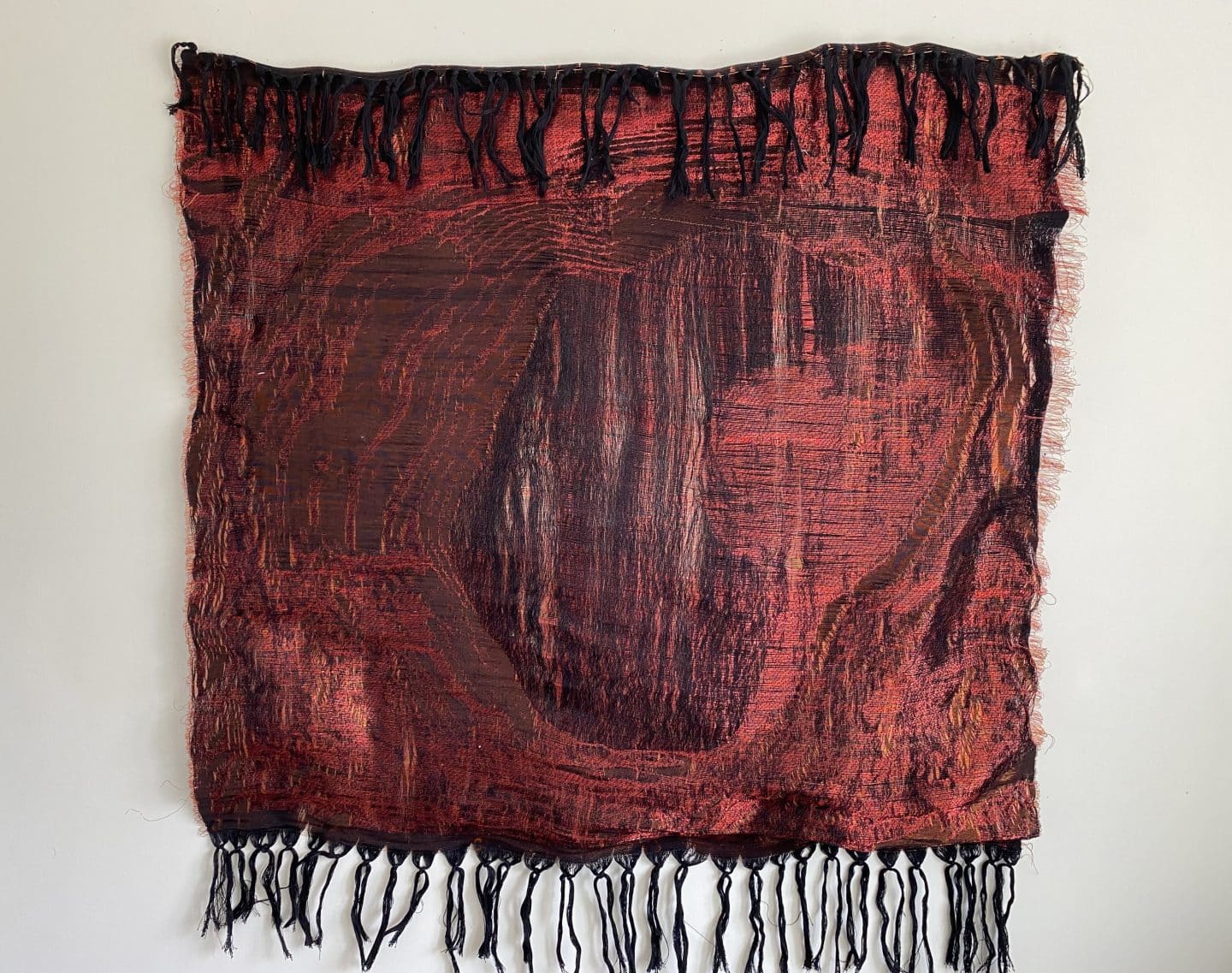Hilos Conductores brings together arpilleras created during the Chilean dictatorship with recent work of textile artists and collectives to follow the threads linking our lives and futures across the continent.
In Spanish, the phrase hilos conductores can mean two things: conductive threads and the main idea or theme of a story.
a. Copper is one of the best and most efficient electrical conductors of all metals. Chile is the biggest exporter of copper in the world, supplying 30% of this essential resource to global markets. Across the continent, the corporate landscape of downtown Toronto— where Sur Gallery is also located—is dotted with the headquarters of mining companies that operate in Canada, Chile and beyond.
b. Extractive industries like mining require large volumes of water for processes that often lead to water scarcity and pollution. This is especially pernicious in countries like Chile, where water is private and thus exploited for profit. The Ontario Teachers’ Pension Plan owns over 34% of water rights in the South American country.1
c. Electrocution is used by repressive regimes as punishment. During the Chilean dictatorship (1973–1990), parrillas, or electrically charged beds, were used to torture dissenters. With this violence the regime created the necessary conditions to roll out an economic agenda based on the extraction and export of natural resources.
d. During the Chilean dictatorship, arpillera makers used threads and scraps of fabric to tell their stories of loss, struggle, and resistance. Today, artists and textile collectives continue to draw on this tradition of creative resistance to denounce injustices and instigate social change.
While grounded in personal histories and local resistance, the textile pieces by Bélgica Castro, Memorarte, Soledad Muñoz, Tamara Marcos and Autorretazo are hilos conductores that reflect on accumulation schemes and supply chains that connect distant geographies. By presenting these works together with arpilleras created between the 1980s and the early 1990s, this exhibition honours the work of arpillera makers and the longstanding struggles, now more urgent than ever, against authoritarianism, free-market orthodoxy and extractivism.2
Hilos conductores is an invitation to reimagine transnational and ecological relationships in more just and sustainable ways.
Co-presented by Agnes Etherington Art Centre, Sur Gallery, and the Textile Museum of Canada.

Soledad Muñoz, Carmen de Andacollo (Wounds of Chile series), 2021, double woven copper and red thread. Collection of the artist.